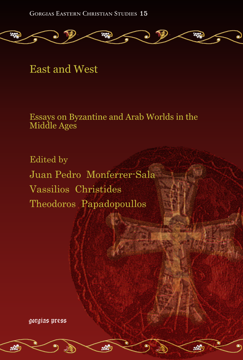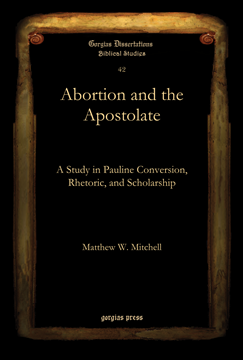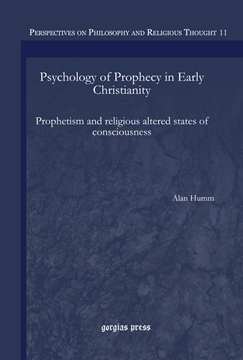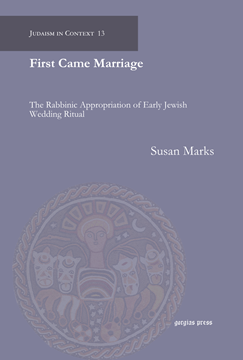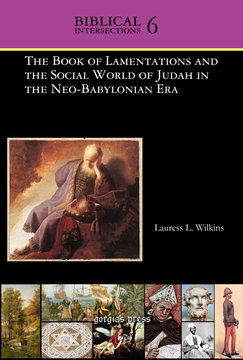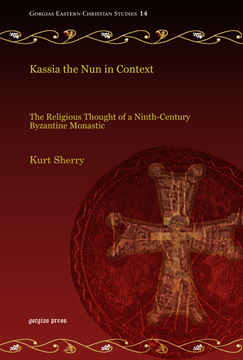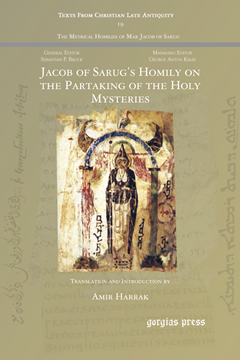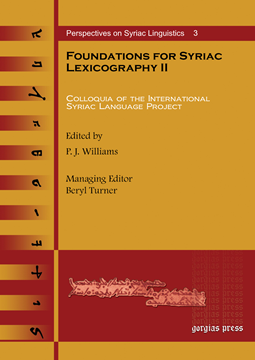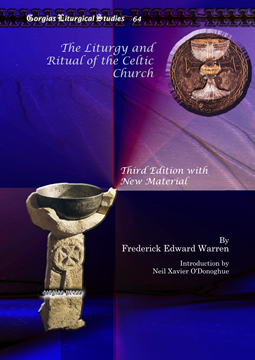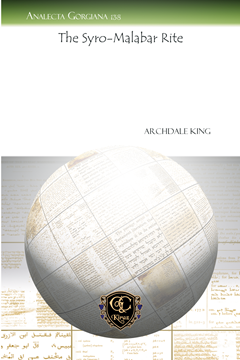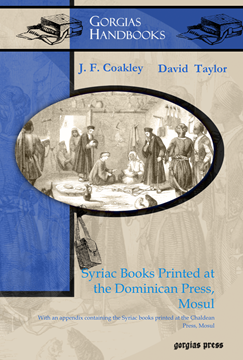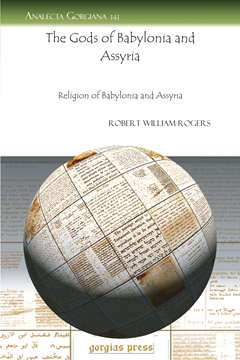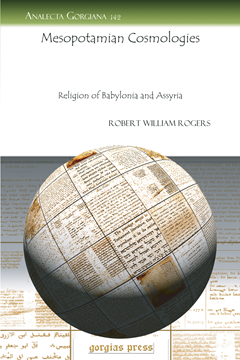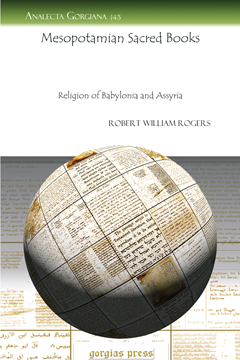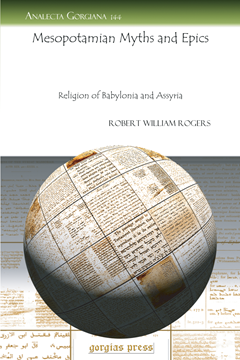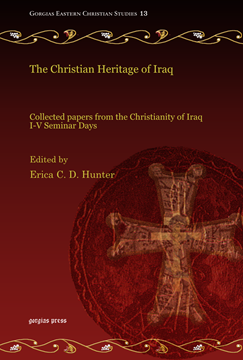East and West
Essays on Byzantine and Arab Worlds in the Middle Ages
Series: Gorgias Eastern Christian Studies 15
ISBN: 978-1-60724-056-3
Twenty-four contributions on matters dealing with Byzantine and Oriental lands, people, and cultures through different perspectives, including history, maritime trade, documents, travelers, and art. These essays trace the history of the relations between the Greeks and the peoples of the Middle East from Late Antiquity up to the seventeenth century.
$202.00 (USD)
Abortion and the Apostolate
A Study in Pauline Conversion, Rhetoric, and Scholarship
Series: Gorgias Biblical Studies 42
ISBN: 978-1-60724-057-0
This book argues that it is the rejection of Paul’s claims to be an apostle in the same sense as the other apostles that ultimately underlies his “mission to the Gentiles.” This argument is advanced through a careful analysis of Paul’s references to his “conversion” in Galatians 1:15-17 and 1 Corinthians 15:8, paying particular attention to Paul’s evocative use of the language of abortion. The contextualization of this curious self-description in 1 Corinthians 15:8 draws upon a growing body of work concerning an area of ancient life that continues to fascinate and perplex moderns; the exposure of unwanted infants.
$148.00 (USD)
Yours, Mine, or Theirs? Historical Observations on the Use, Collection and Sharing of Manuscripts in
Series: Analecta Gorgiana 126
ISBN: 978-1-60724-059-4
In the west centuries ago manuscripts were replaced by printed books, and relegated to mostly secular libraries as a result of religious and political upheavals. In the Christian Orient such changes were slower and remain less advanced. Manuscripts have not entirely vanished from regular use, and Christian communities retain ownership of significant collections of their historic manuscripts. The vital connection between manuscripts and religious culture endures, even if attenuated by persecution, diaspora, technology, and other aspects of modernity. This essay provides an historical survey of these issues in both Europe and the Christian Orient (limited here to the Middle East, the Caucasus, and Ethiopia/Eritrea).
$36.00 (USD)
Psychology of Prophecy in Early Christianity
Prophetism and religious altered states of consciousness
By Alan Humm
ISBN: 978-1-60724-618-3
Dr. Humm analyses early Christian prophetic activity seeking to understand the psychological states behind it. A system of categories is suggested based on the external appearances and subjective claims of modern phenomena. Assuming that the ancients followed the same patterns, most instances described in early Christian literature are reviewed and categorized.
$155.00 (USD)
First Came Marriage
The Rabbinic Appropriation of Early Jewish Wedding Ritual
By Susan Marks
Series: Judaism in Context 13
ISBN: 978-1-59333-585-4
Ritual and historical perspectives each provide only a partial view of early Jewish weddings. Combining these approaches allows for a new look at practices rejected or highlighted by early rabbis and their successors, and First Came Marriage: The Rabbinic Appropriation of Early Jewish Wedding Ritual investigates the process by which early Jews married and the various moves they used to minimize, elaborate or codify these practices.
$150.00 (USD)
The Book of Lamentations and the Social World of Judah in the Neo-Babylonian Era
Series: Biblical Intersections 6
ISBN: 978-1-60724-112-6
Using a form of social-historical criticism this book provides a counter-reading of Lamentations that elucidates the impact and aftermath of siege warfare on Judah's peasants. The rhetoric of Lamentations, ancient Near Eastern writings, and archaeological evidence are considered, along with social models from other agrarian societies. Together these shed light on the changing social dynamics, religious customs, and political and economic structures of rural and urban Judah in the sixth century BCE. This study brings to life voices long silent, and suggests that Judah's peasants played a significant role in the survival of peasant and city-dweller alike, when Jerusalem fell.
$152.00 (USD)
Kassia the Nun in Context
The Religious Thought of a Ninth-Century Byzantine Monastic
By Kurt Sherry
Series: Gorgias Eastern Christian Studies 14
ISBN: 978-1-61143-969-4
Kassia the Nun offers a unique glimpse into ninth-century Byzantium in the only woman whose works were included in the corpus of liturgical hymns. This volume explores Kassia’s thought on Christology, on gender, and on monasticism itself. It provides readers with an opportunity to know this woman of remarkable intellect, wit, and piety by drawing primarily on her own words. Kassia’s is one of the only female voices from ninth-century Byzantium and this volume accordingly examines her reflections on gender in the context of her society and concludes that she represents a perspective that might be described as feminist.
$123.00 (USD)
Jacob of Sarug’s Homily on the Partaking of the Holy Mysteries
Translation and Introduction by Amir Harrak
Series: Texts from Christian Late Antiquity 19
ISBN: 978-1-60724-086-0
This edition of Mar Jacob of Sarug's (d. 521) homily on Partaking in the Holy Mysteries is one of Jacob’s memre on the sacraments. In this homily, Jacob is shocked that some of his congregants are leaving the service early, before the eucharist has been celebrated. He emphasizes the importance of the liturgical celebrations for a Christian life in a message still applicable today. The volume constitutes a fascicle of The Metrical Homilies of Mar Jacob of Sarug, which, when complete, will contain the original Syriac text of Jacob's surviving sermons, fully vocalized, alongside an annotated English translation.
$31.00 (USD)
Foundations for Syriac Lexicography II
Colloquia of the International Syriac Language Project
Edited by P. J. Williams; Managing Editor Beryl Turner
Series: Perspectives on Syriac Linguistics 3
ISBN: 978-1-60724-088-4
This volume is part of a series that addresses issues of Classical Syriac lexicography, and the lexicography of other ancient languages. The international team of authors invited to participate represents a wide range of disciplines and opens new horizons in lexical thinking. Essays in this volume discuss taxonomy, the Syriac passive participle, translating Greek verbs with alpha privatives into Syriac, the translation of Syriac particles, and the history of Syriac lexica. This book represents the forefront of Syriac lexical studies, and has much to offer those studying Greek and other Semitic languages as well.
$138.00 (USD)
The Syrian Rite of Antioch
Series: Analecta Gorgiana 130
ISBN: 978-1-60724-094-5
In his classic introduction to Eastern Orthodox liturgies, King examines the liturgies of the Oriental Orthodox churches. In this volume the Syrian rite is considered. The rite is described and given a context in the setting of its native church.
$66.00 (USD)
Introduction to The Rites of Eastern Christendom
Series: Analecta Gorgiana 131
ISBN: 978-1-60724-070-9
In his classic introduction to Eastern Orthodox liturgies, King examines the liturgies of the Oriental Orthodox churches. In this volume the introductory material to his work is presented. The various Oriental Churches are described in this introduction.
$45.00 (USD)
The Maronite Rite
Series: Analecta Gorgiana 132
ISBN: 978-1-60724-095-2
In his classic introduction to Eastern Orthodox liturgies, King examines the liturgies of the Oriental Orthodox churches. In this volume the Maronite rite is considered. The rite is described and given a context in the setting of its native church.
$56.00 (USD)
The Coptic Rite
Series: Analecta Gorgiana 132
ISBN: 978-1-60724-096-9
In his classic introduction to Eastern Orthodox liturgies, King examines the liturgies of the Oriental Orthodox churches. In this volume the Coptic rite is considered. The rite is described and given a context in the setting of its native church.
$69.00 (USD)
The Ethiopic Rite
Series: Analecta Gorgiana 134
ISBN: 978-1-60724-097-6
In his classic introduction to Eastern Orthodox liturgies, King examines the liturgies of the Oriental Orthodox churches. In this volume the Ethiopic rite is considered. The rite is described and given a context in the setting of its native church.
$69.00 (USD)
The Armenian Rite
Series: Analecta Gorgiana 135
ISBN: 978-1-60724-098-3
In his classic introduction to Armenian Orthodox liturgies, King examines the liturgies of the Oriental Orthodox churches. In this volume the Ethiopic rite is considered. The rite is described and given a context in the setting of its native church.
$61.00 (USD)
The Byzantine Rite
Series: Analecta Gorgiana 136
ISBN: 978-1-60724-099-0
In his classic introduction to Byzantine Orthodox liturgies, King examines the liturgies of the Oriental Orthodox churches. In this volume the Byzantine rite is considered. The rite is described and given a context in the setting of its native church.
$92.00 (USD)
The Liturgy and Ritual of the Celtic Church
Third Edition with New Material
By Frederick Edward Warren; Introduction by Neil Xavier O'Donoghue
Series: Kiraz Liturgical Studies 64
ISBN: 978-1-60724-100-3
This is a new edition of Warren's classic study on the Liturgy and Ritual of the Celtic Church. A new introduction and up-to-date bibliography is provided. In addition two other important editions of early Irish liturgical books are reproduced in this volume: Bartholemew MacCarthy's edition of The Stowe Missal and Whitley Stokes edition of an old Irish Tractate on the Consecration of a Church.
$205.00 (USD)
The Chaldean Rite
Series: Analecta Gorgiana 137
ISBN: 978-1-60724-101-0
In his classic introduction to Byzantine Orthodox liturgies, King examines the liturgies of the Oriental Orthodox churches. In this volume the Chaldean rite is considered. The rite is described and given a context in the setting of its native church.
$70.00 (USD)
The Syro-Malabar Rite
Series: Analecta Gorgiana 138
ISBN: 978-1-60724-102-7
In his classic introduction to Byzantine Orthodox liturgies, King examines the liturgies of the Oriental Orthodox churches. In this volume the Syro-Malabar rite is considered. The rite is described and given a context in the setting of its native church.
$55.00 (USD)
Syriac Books Printed at the Dominican Press, Mosul
With an appendix containing the Syriac books printed at the Chaldean Press, Mosul
Series: Gorgias Handbooks 14
ISBN: 978-1-60724-104-1
Since the 1850s until the outbreak of World War I, the Dominican Press in Mosul, Iraq, produced scholarly, liturgical, and pedagogical publications to service the local Christian communities. These hard to find publications have now been cataloged in detail by J. F. Coakley and David G. K. Taylor.
$98.00 (USD)
The Gods of Babylonia and Assyria
Religion of Babylonia and Assyria
Series: Analecta Gorgiana 141
ISBN: 978-1-60724-107-2
Originally the second in a series of five lectures delivered at Harvard University, this extract is an early attempt to tackle a formidable subject: the religion of ancient Iraq, or Mesopotamia. Rogers introduces the reader to Sumer and Babylonia, noting the early kings and their deities. This essay then engages in an historical rendering of the gods of the dominant cities of Babylonia and Assyria. Engaging and informative, Rogers’ narrative is accessible to the specialist and general reader alike.
$43.00 (USD)
Mesopotamian Cosmologies
Religion of Babylonia and Assyria
Series: Analecta Gorgiana 142
ISBN: 978-1-60724-108-9
Originally the third in a series of five lectures delivered at Harvard University, this extract is an early attempt to tackle a formidable subject: the religion of ancient Iraq, or Mesopotamia. In this essay Rogers considers the great cosmologies of ancient Mesopotamia. In an easy narrative style, he recounts the discovery of the Enuma Elish and providing a brief summary of its contents. He makes a comparison of this cosmology with those of Genesis, demonstrating the interconnectedness of the ancient world of western Asia. Engaging and informative, Rogers’ narrative is accessible to the specialist and general reader alike.
$43.00 (USD)
Mesopotamian Sacred Books
Religion of Babylonia and Assyria
Series: Analecta Gorgiana 143
ISBN: 978-1-60724-109-6
Originally the fourth in a series of five lectures delivered at Harvard University, this extract is an early attempt to tackle a formidable subject: the religion of ancient Iraq, or Mesopotamia. Noting that sacred writings are nearly universal among religions, Rogers offers a brief exposition on the sacred writings of the ancient Mesopotamians. Engaging and informative, Rogers’ narrative is accessible to the specialist and general reader alike.
$41.00 (USD)
Mesopotamian Myths and Epics
Religion of Babylonia and Assyria
Series: Analecta Gorgiana 144
ISBN: 978-1-60724-110-2
Originally the fifth in a series of five lectures delivered at Harvard University, this extract is an early attempt to tackle a formidable subject: the religion of ancient Iraq, or Mesopotamia. In this last essay of the set, Rogers focus on the mythic tradition of Mesopotamia, discussing the myths of Adapa, Ishtar’s descent to the netherworld, and the Gilgamesh epic, especially concentrating on the deluge account. Engaging and informative, Rogers’ narrative is accessible to the specialist and general reader alike.
$43.00 (USD)
The Christian Heritage of Iraq
Collected papers from the Christianity of Iraq I-V Seminar Days
Edited by Erica C. D. Hunter
Series: Gorgias Eastern Christian Studies 13
ISBN: 978-1-60724-111-9
Iraq has been a centre of Syriac Christianity for almost two thousand years. This volume of collected papers from the Christianity in Iraq I-V Seminar Days (2004-2008) explores the Christian heritage of Iraq, highlighting the churches’ innate ability to transcend barriers of language, culture, ethnicity and religion.
$193.00 (USD)
